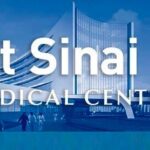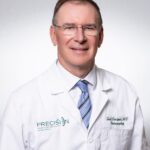 As this year’s breast cancer awareness month comes to a close, we should be reminded that breast cancer happens year round. While the statistics remain that one in eight women will develop breast cancer at some point in their lifetime, the death rate from cancer is decreasing. The current estimates for newly diagnosed breast cancers in the United States for 2017 is 252,710. The number of expected deaths are estimated at 40,610. While this number seems staggering, it represents a 39% decline in the death rate over the previous decade.
As this year’s breast cancer awareness month comes to a close, we should be reminded that breast cancer happens year round. While the statistics remain that one in eight women will develop breast cancer at some point in their lifetime, the death rate from cancer is decreasing. The current estimates for newly diagnosed breast cancers in the United States for 2017 is 252,710. The number of expected deaths are estimated at 40,610. While this number seems staggering, it represents a 39% decline in the death rate over the previous decade.
The decline in the death rate from breast cancer can be attributed to better treatments as well as earlier diagnosis. The rise of targeted and immunotherapy against breast cancer has probably contributed the most to this decrease. The combination of Herceptin and Perjeta in combination for HER2-positive breast cancers can lead to over 50% complete response when given preoperatively.
While better drugs are available to treat breast cancer, we must first diagnose the disease. Broward Health was one of the first institutions that introduced Contrast Enhanced Spectral Mammograms (CESM) for the early detection of the disease. For women with dense breasts, even the best routine mammograms can miss up to 15% of breast cancers. MRI is an excellent modality to detect certain breast cancers especially in high-risk women. It does however, have a high false positive rate of about 40%. CESM on the other hand is as sensitive as breast MRI but with a much lower false positive rate of 5% based on recent studies. It is also beneficial in detecting multifocal cancer that can better direct surgical treatment options.
All of the above should be encouraging. However, if we do not assess risk and strive for early detection through proper screening, the inroads we have made in reducing the death rate from breast cancer will be short lived. The controversies regarding when to screen should be kept out of the press as to not confuse the public. All patients should have a thorough discussion with their clinician regarding their risk factors for developing breast cancer and to tailor a screening program that meets those needs. This can be best accomplished in bona fide comprehensive breast centers.

























